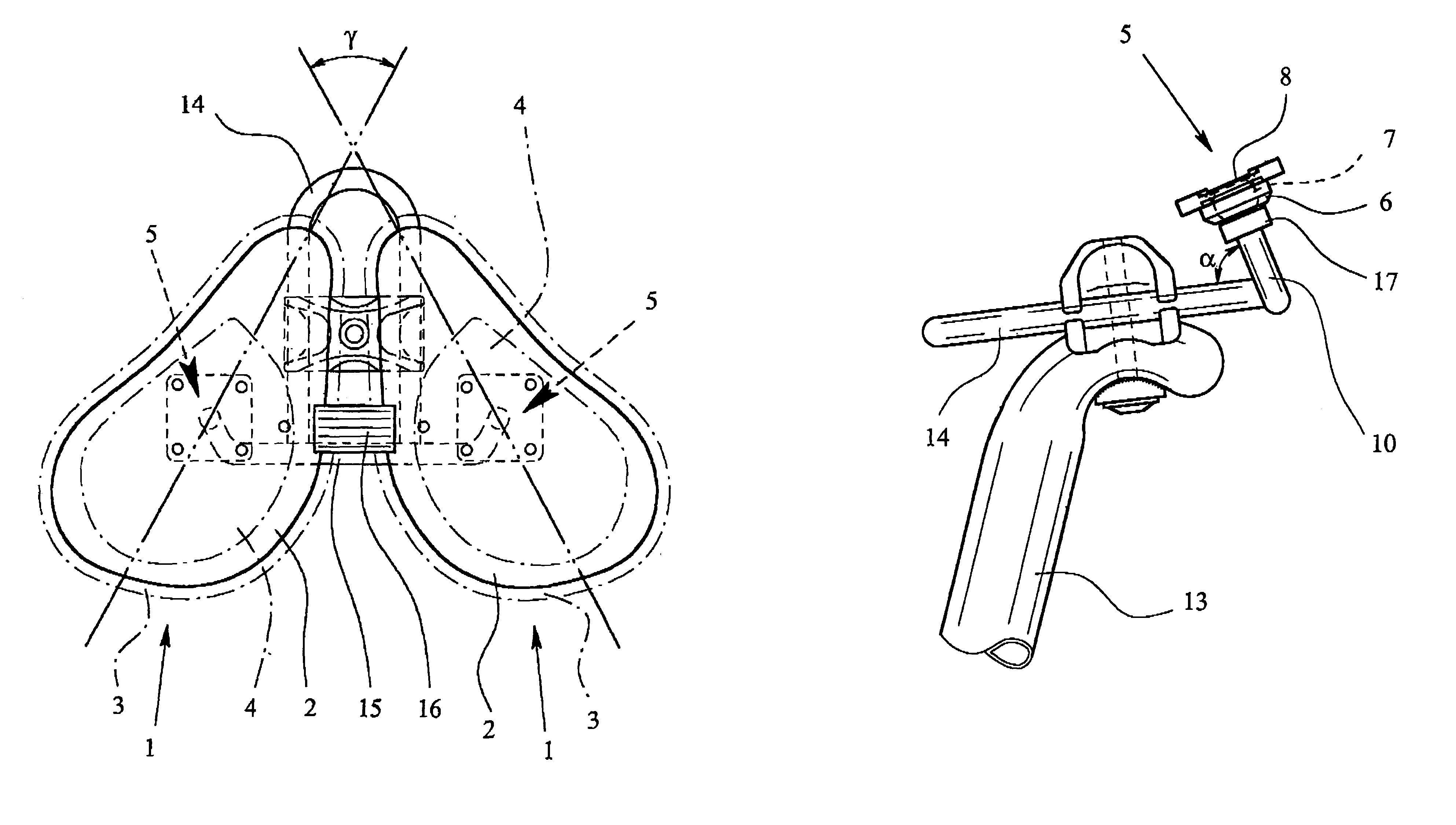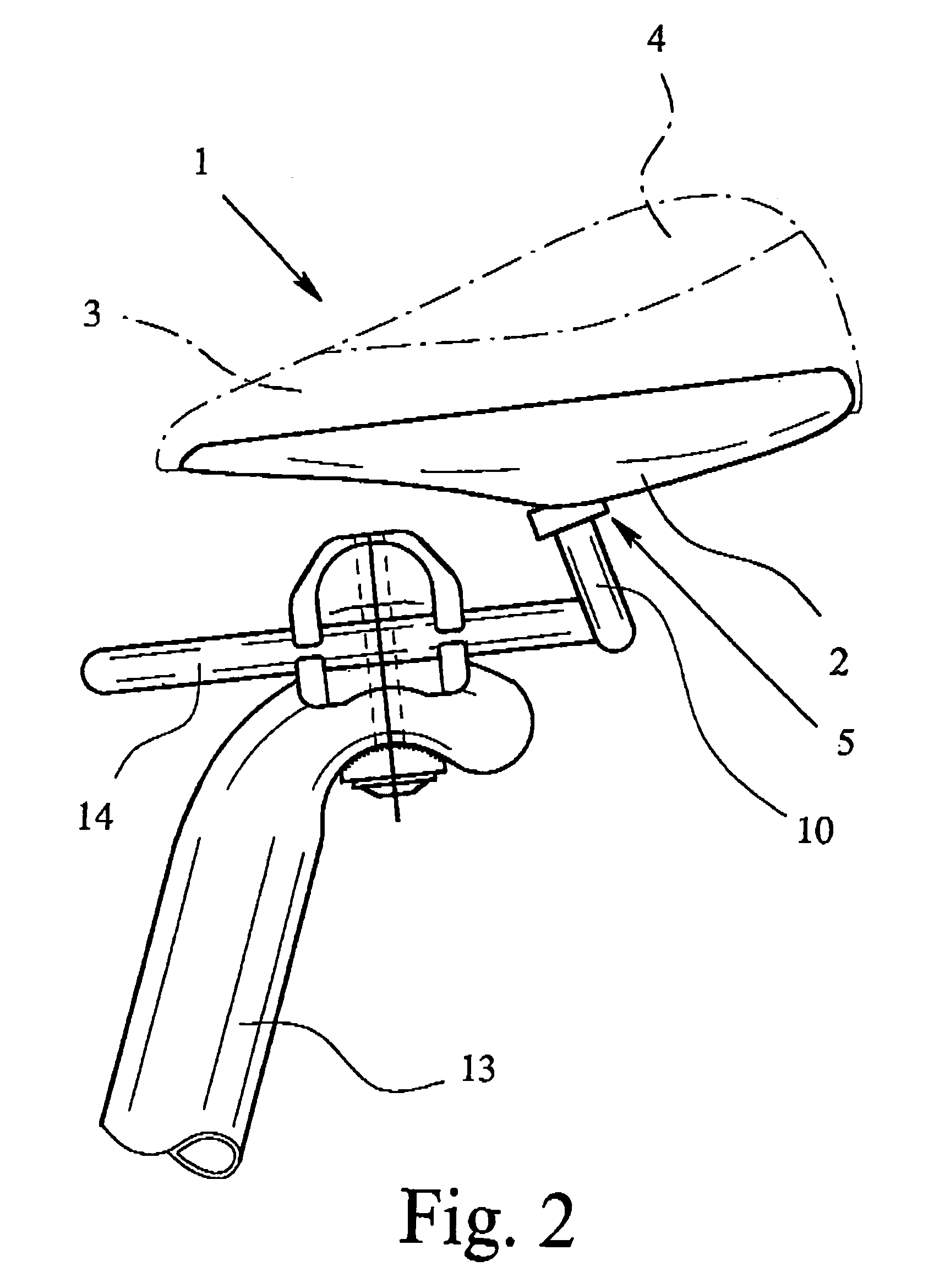[0010]Proceeding from the initially described saddle with two seat halves which are spaced apart from one another and which are each designed for one half of the buttocks, a primary object of the invention is to provide such a saddle which ensures use essentially free of pressure points with optimum transfer of force to the pedals and simultaneously a
solid seat.
[0015]When using the saddle of the invention, therefore in its mounted state, it is furthermore preferred that the cup joint axes are also forwardly inclined. Thus, as a result, less tilting of the two seat halves to the rear than to the front is enabled. It is especially possible in this way not to allow tilting of the two seat halves to the rear beyond the horizontal. That the cup joint axes are tilted to the front, for, example, can be achieved by a correspondingly made support rod. However, the mounting of the support rod on the saddle support must also be considered, currently available saddle supports generally enabling adjustment of the tilt range of the support rod and thus of the saddle to the front or back.
[0016]Basically, it is possible to achieve a
range of motion of the cup element in the socket of the respective cup joint arrangement in different ways. According to one preferred development of the invention, it is provided that the means for limiting the range of motion of the cup element in the socket the cup element has a collar on its top end and / or on its bottom end which strikes the edge of the socket at the end of the range of motion. In this way, the angle within which the cup element can be moved in the socket can be exactly predetermined. If there is a collar both on the top edge and also on the bottom edge of the cup element, it is a double collar cup joint which is located in an annular socket.
[0017]According to a preferred embodiment of the invention, it is especially provided that the edge of the socket and the collar of the cup element, which collar at the end of the range of motion strikes the edge of the socket, are matched to one another such that extended resting of the collar of the cup element on the edge of the socket occurs. Specifically, this means that the collar of the cup element and the edge of the socket which interact with it are angularly matched to one another so that, not only do the two elements rest on one another at one point, but they at least rest along a line. In this way, the forces which act between the cup element and the socket are better distributed; this reduces wear of the cup joint arrangement overall. Moreover, the collars are especially well suited as guide elements for the motion of the cup joint. Essentially, sliding motion of the collars on the edge of the annular socket is enabled; the stop can act as a sliding stop.
[0021]Furthermore, it has been found to be advantageous that the respective cup joint is provided under the center of gravity of the respective seat half. Moreover, the cup joint axes preferably lie in one plane. While the supports are typically made the same length, it can also be provided that the supports are of different length in order to compensate, for example, for malpositions of the
pelvis.
[0022]The shape of the two seat halves also acquires great importance. While basically round or oval seat halves can be used, according to a preferred embodiment of the invention, it is provided that the seat halves each have the shape of a half heart with a short and rounded tip which points forward. Furthermore, here it applies that, preferably, the major axes include an angle which is in the range between 50° and 65°, preferably 57°, along the respectively greatest extension of each seat half. The major axes along the respective greatest extension of each seat half typically run through the end of the tip and the center of gravity of the seat half. In this way, the
saddle shape enables optimum leg guidance and ergonomic pedaling. According to a preferred development of the invention, it is furthermore provided that the facing edges of the two seat halves run roughly parallel to one another, specifically preferably, as indicated above, at a distance of roughly 2 cm or somewhat less.
 Login to View More
Login to View More  Login to View More
Login to View More 


